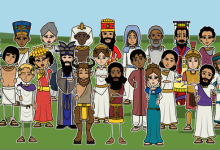The World’s Oldest Mummies: A Journey Through Time
The phenomenon of mummification has captured the imagination of people for centuries, giving us an unparalleled glimpse into the lives of ancient civilizations. While mummification is most commonly associated with ancient Egypt, the practice of preserving human bodies has appeared in various forms around the world, from the Andes to China, from Egypt to the Arctic. The oldest mummies on Earth, preserved in various ways and for different reasons, provide essential information about ancient cultures and offer insight into the practices, beliefs, and environmental conditions that shaped them. This article delves into the world’s oldest mummies, the methods of preservation they underwent, and the significance of their discoveries.
The Earliest Mummification Practices
Mummification is the deliberate preservation of a body, typically through desiccation (drying out), embalming, or sometimes freezing. This process has existed for thousands of years, evolving across different regions and cultures. While many people associate mummies with Egypt, evidence of mummification techniques dates back to at least 5,000 years ago. Some of the oldest examples come from parts of South America, where the dry and arid environment naturally helped preserve bodies. Others stem from areas with cold climates where the frigid temperatures caused bodies to freeze and remain remarkably well-preserved.

1. The Chinchorro Mummies (Chile) – Around 5000 BCE
Arguably the oldest known examples of intentional mummification are the Chinchorro mummies, which originate from the coastal regions of northern Chile and southern Peru. The Chinchorro people, who lived in this region around 5000 BCE, developed the practice of mummification long before the Egyptians. These mummies are some of the most well-preserved and oldest examples of human remains from the Americas, predating the Egyptians by more than a millennium.
Unlike the Egyptian mummies, which were primarily preserved for religious reasons, the Chinchorro mummies may have had social or cultural significance. The mummification process of the Chinchorro people involved removing the internal organs, including the brain, and then drying and curing the body using ash and plant materials. In some cases, the mummies were reassembled with clay and other materials to restore the form of the body. This suggests that mummification had a significant ceremonial or symbolic role in their society.
The Chinchorro mummies have provided valuable insight into the cultural practices of these early humans, showing the sophisticated knowledge of anatomy and preservation techniques they had developed.
2. The Egyptian Mummies (Egypt) – Around 2600 BCE
The mummification process for which ancient Egypt is most famous is believed to have begun during the Early Dynastic Period, around 2600 BCE, although evidence suggests that the Egyptians may have been experimenting with embalming techniques earlier than this. Egypt’s elaborate mummification practices became more refined over thousands of years, driven by religious beliefs surrounding the afterlife and the preservation of the soul.
In ancient Egypt, mummification was a complex ritual performed by specialized priests. The process involved the removal of the internal organs, which were either embalmed separately or placed in canopic jars, followed by desiccation of the body using natron (a natural salt compound). The body was then wrapped in linen bandages and often placed in a series of coffins or sarcophagi. The most famous mummies, such as those of the pharaohs and nobility, were placed in elaborate tombs, often in the Valley of the Kings, to ensure that their bodies would remain intact for their journey to the afterlife.
One of the most well-known mummies is that of Tutankhamun, the young Egyptian pharaoh, whose tomb was discovered in 1922 by British archaeologist Howard Carter. The discovery of Tutankhamun’s tomb provided an unprecedented glimpse into ancient Egyptian burial practices and material culture. Tutankhamun’s mummification, while not as elaborate as those of other pharaohs, still followed the essential steps of embalming, desiccation, and wrapping, showcasing the religious and cultural significance of mummification.
3. The Tarim Mummies (China) – Around 1800 BCE
Another fascinating set of ancient mummies was discovered in the Tarim Basin in present-day Xinjiang, China. These mummies, which date back to around 1800 BCE, are notable not only for their age but also for their distinct European features, which have led to much debate regarding the origins of the people buried there. Known as the Tarim mummies, they provide an intriguing glimpse into the diversity of ancient populations in Asia.
The mummification of the Tarim people was likely influenced by the dry, desert-like conditions of the region. These mummies were preserved in remarkably good condition due to the extreme aridity of the environment, which acted as a natural preservative. The bodies were often clothed in woolen textiles and surrounded by grave goods, including woven baskets, leather shoes, and bronze objects, offering important evidence of the life and culture of the people who lived in the region over 4,000 years ago.
What sets the Tarim mummies apart is their remarkable preservation of soft tissues, hair, and clothing, which are rarely found in other mummified remains. The Tarim mummies challenge our assumptions about the ancient Silk Road, suggesting that people from various regions, including Europe, may have been living in Central Asia long before the rise of the great empires of China and Persia.
4. The Inca Mummies (Peru) – Around 1400 CE
The Inca Empire, which flourished in South America from the 15th to the early 16th centuries, was also known for its mummification practices. While their methods were not as ancient as those of the Chinchorro or Egyptians, the Incas mummified their dead for both religious and political reasons. Mummification was viewed as a means to honor ancestors and to maintain the connection between the living and the deceased.
The Inca mummies were typically those of rulers or high-status individuals. These individuals were often buried with valuable items, such as gold, silver, textiles, and food, all of which were believed to be necessary for the deceased to continue their existence in the afterlife. The Inca also practiced shrunken heads, a form of mummification of enemies, which involved removing the skull and shrinking the skin to create a trophy for display.
One of the most significant Inca mummies was that of Juanita, also known as the “Ice Maiden,” who was discovered in 1995 atop Mount Ampato in Peru. Juanita, believed to have been a young girl sacrificed to the gods in a religious ritual, was remarkably well-preserved due to the cold temperatures at such high altitudes. Her discovery provided invaluable insights into the Inca’s sacrificial practices and their beliefs surrounding death.
5. The Alaskan and Arctic Mummies (North America) – Around 5000 BCE
In the cold regions of Alaska and the Arctic, natural mummification occurred through a process of freezing rather than the deliberate embalming techniques used in warmer climates. One of the earliest and most famous examples of mummification from this region is the Iñupiat mummy found in 1992 at a site in Alaska known as the Tanana River. This mummy, which dates back approximately 5000 years, was preserved by the freezing conditions of the permafrost.
Similarly, other mummies have been found in the frozen tombs of Siberia and in the permafrost of the northern latitudes. These mummies provide valuable information about the pre-Columbian peoples of North America, their health, diet, and culture. The preservation of these mummies allows modern scientists to analyze genetic material, revealing more about the migration patterns of ancient peoples and their adaptation to extreme environmental conditions.
Conclusion: A Window into the Past
The study of ancient mummies from around the world offers an invaluable window into the lives and beliefs of ancient peoples. Whether through the dry, arid conditions of the Andes, the icy landscapes of the Arctic, or the deliberate rituals of ancient Egypt, the preservation of these individuals has provided an extraordinary level of detail about human history. Mummification was not only a method of preserving the dead but also a complex practice that reflects the cultures, environments, and spiritual beliefs of ancient societies.
As scientific techniques continue to advance, we are able to learn more about the health, genetics, and lifestyles of these long-gone civilizations, deepening our understanding of the past. The oldest mummies of the world, preserved in various forms and for various reasons, remain silent witnesses to the complex and multifaceted history of humankind. They will undoubtedly continue to reveal their secrets as new methods of analysis and preservation emerge, allowing us to better comprehend the richness and diversity of our shared heritage.

